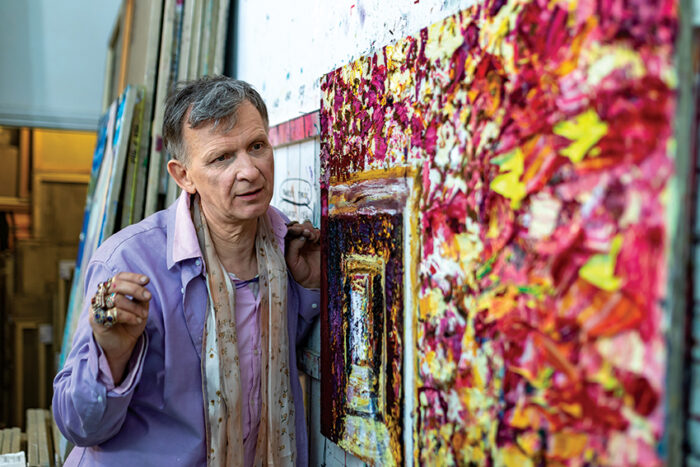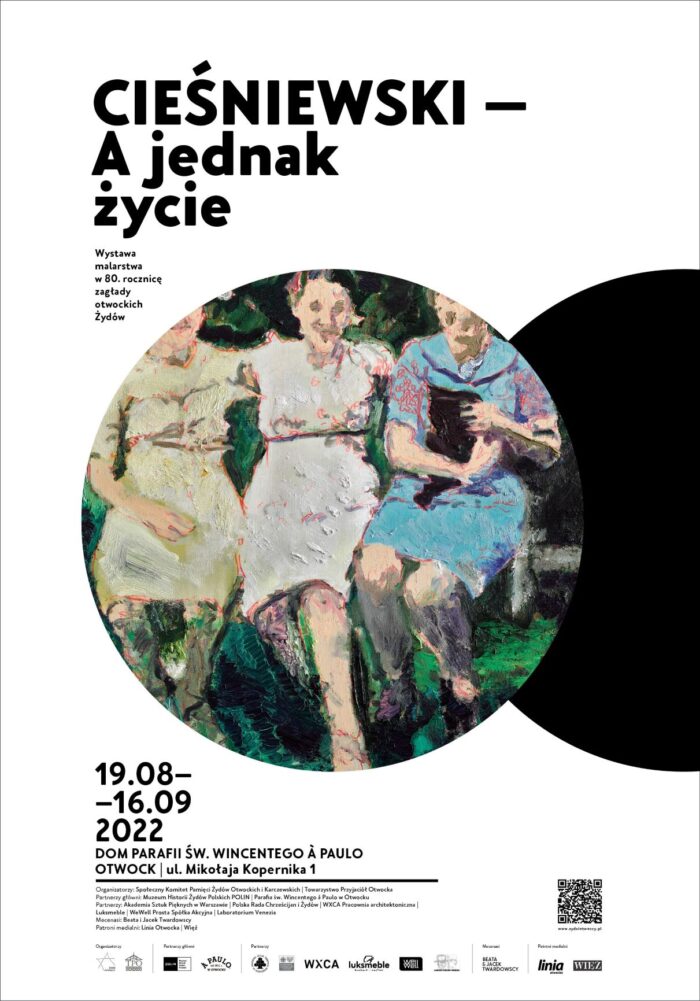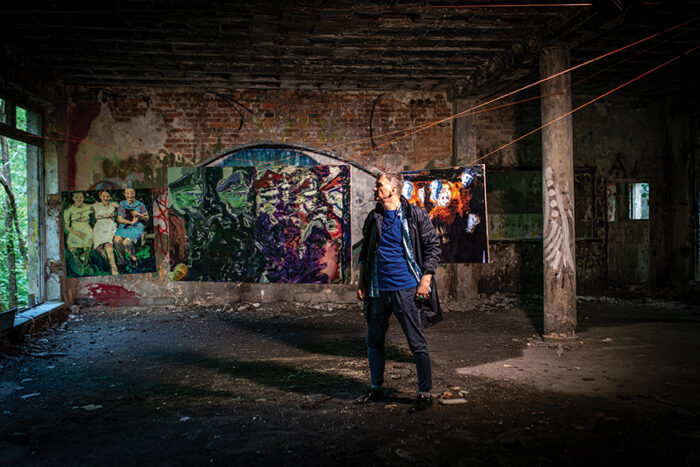
WHAT
Exhibition of paintings for the 80th anniversary of the annihilation of the Otwock Jews
WHERE
Parish House of the Church of St Vincent de Paul, ul. Kopernika 1, Otwock
WHEN
Opening: 18 August 2022, 7 p.m.
Open: 19 August – 16 September 2022
Monday-Friday 9–12 and 18–20
Saturday–Sunday 15–18
PATRONS
Beata Twardowska
Jacek Twardowski
ORGANISERS
Citizens’ Committee for Remembrance of the Jews of Otwock and Karczew
Friends of Otwock Society
MAIN PARTNERS
POLIN Museum of the History of Polish Jews
Roman Catholic Parish of St. Vincent de Paul in Otwock
CURATOR
Tamara Sztyma / POLIN Museum of the History of Polish Jews
EXHIBITION DESIGN
Paweł Wolanin, Ewelina Szeląg, Marta Sękulska-Wrońska / WXCA Architecture Office
GRAPHIC DESIGN
Marta Lachowska / Academy of Fine Arts in Warsaw
PHOTOGRAPHY
Piotr Ligier
Jacek Twardowski
COORDINATION AND PRODUCTION
Zbigniew Nosowski
Beata Twardowska
Jacek Twardowski
PARTNERS
Academy of Fine Arts in Warsaw
Polish Council of Christians and Jews
WXCA Architecture Office
Luksmeble
WeWell p.s.a.
Laboratorium Venezia
Więź
TRANSLATION
Jolanta Scicińska

‘I paint out of fear of evil and longing for holiness.’ This is how Wojciech Cieśniewski describes his work. For two years he has been painting pictures that express his personal reaction to the difficult history of the twentieth century. Among them are many paintings of the Otwock Jews, presented in this exhibition to commemorate the 80th anniversary of the annihilation of the Otwock ghetto.
The core of the Life, After All exhibition are paintings inspired by prewar snapshots of Otwock Jews. Such photos are frequently called up in the context of Holocaust remembrance. Looking at them is hard, knowing they show people who perished in a barbarous way, when before the war they looked so astonishingly full of life.
The artist transposes the people from the photographs onto canvas, contemplating them with surprise and disbelief. The strong feelings that the Holocaust arouses in him find expression in the way he paints: ferociously, sketchily, smudging his figures expressively, duplicating frames from the same story. His paintings are like the afterimages lurking under our eyelids, where the past mixes with the present, and reality with dreams. Such a blurring and multiplying of images would seem to bear witness to the impossibility of creating a coherent representation of what happened. The artist calls up events from the past and makes ‘attempts’ to touch experiences he cannot understand.
Cieśniewski’s work is not just an elegy for the murdered; in his dreamlike pictures the artist is able to transcend grief, bringing to life those who perished, or juxtaposing the dead with those who survived. His painting becomes a declaration of not accepting death, an act of moral opposition towards history. Some of the paintings are dedicated to those who really did survive, giving a beginning to new generations and thus thwarting the Nazi plans for annihilation. Their children, grandchildren and great-grandchildren are writing new pages in the history of the world.
The paintings of Otwock’s Jewish residents in the exhibition are surrounded by work which allows for a broader perspective, sharing the artist’s scrutiny of the perpetrators, the witnesses, those who resisted and those who still struggle with remembering. These paintings also contain questions. How is violence born? Can you resist it and what could be the consequences if you do? And finally: how do you remember something that defeats understanding?

Wojciech Cieśniewski was born in 1958 in Działdowo. Before becoming a painter he did a degree in mathematics. He graduated from the Academy of Fine Arts in 1988 and has been working there since 1990, in 2005–2012 as assistant dean in the Faculty of Painting. In 2012 he gained the title of Professor of Art. His work has been shown in over 130 individual and group shows. For the first twenty years he focussed his work on the issue of abstraction, returning later to figurative painting, engaging in dialogue with the European tradition of modern painting. With time he began touching more often on ethical problems, examining the function of art as carrier of goodness and beauty in the lives of humans.